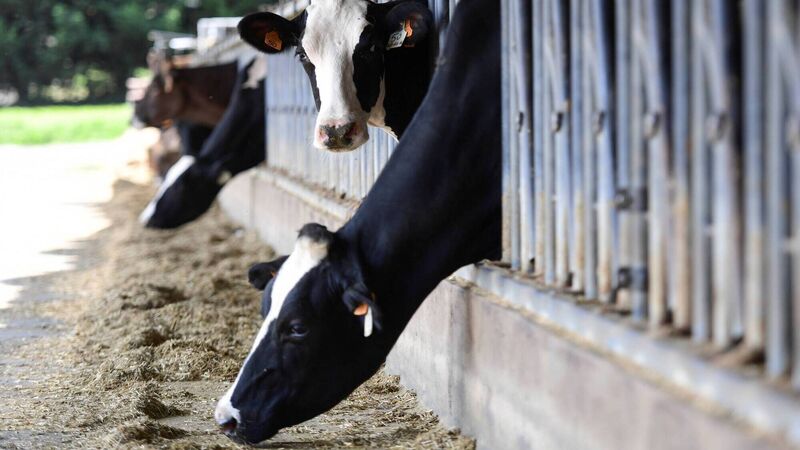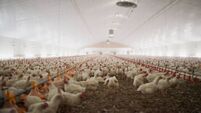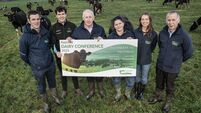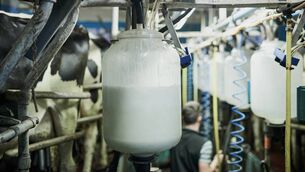Brian Reidy: Tips to make the most from your silage as inputs rise

Once all that are to be housed are in and settled, the next step is to make the best possible use of the feed available on farm. Picture: Miguel MEDINA / AFP via Getty Images
The extended grazing season has been a great boost and has hopefully shortened the winter for many farmers.
With feed and fertiliser prices much higher than previous years, it is great to have fed so little silage as we head into December.
Once all that are to be housed are in and settled, the next step is to make the best possible use of the feed available on farm.
That means balancing it correctly to achieve optimum animal performance.
I wrote a few weeks ago about getting your diets balanced correctly for each batch of animals on the farm.
Unfortunately, 2021 silages are a very mixed bag with some very good feed saved, while some have less than ideal forages saved.
In terms of volume, 2021 has been an excellent year for silage production, which means at least there is not going to be a shortage nationally unless the spring goes really pear-shaped.
Feed your best silage to your most productive cattle.
So if you are finishing cattle or have autumn calving sucklers, then prioritise what you know to be your best silage for them.
Dry cows can get some lower quality silage, but make sure it is capable of supplying enough energy for their maintenance. Monitor intakes and dung consistency to insure these cows are getting the feeding they need. Supplement some protein if the silage is low as this will aid colostrum volume and quality.
Silages are low in protein; as I have outlined recently, not feeding the correct balancing concentrate to address this, is a false economy.
It is a lot cheaper to grow youngstock properly than to chase gain when they are older.
Every year (and day!) bring their challenges. Speaking to others in the industry lately, there were concerns about the amount of dry spoiled silages around the country.
If they enter an animal’s digestive system, moulds and toxins will cause poor performance as they inhibit the population of good bugs in the rumen.
In some countries, it is common practice to use a toxin binder in diets to prevent both visible and invisible mycotoxins from inhibiting animal performance and compromising animal health.
Three years ago, I bought a thermal imaging camera attachment for my smartphone to identify hotspots on silage pits, yet it continues to amaze customers when I point out what is going on in their pits or bales.
It identifies temperature variation with colour coding, red being hot and blue being cold. In some pits, the temperature range can be up to 20 degrees centigrade - the normal temperature of stable silage is 19-21 degrees yet hot spots can reach 35-40 degrees.
These are warm to the touch and are not good feed.
There are silage pits out there this year that simply should not be fed to any animal of any description no matter what. Mycotoxin analysis has shown these silages to be dangerous and containing so many bad toxins that will be detrimental to animal survival, never mind performance.
Almost two weeks ago I posted on Twitter my concerns about the standard of ensiling grass in this country getting worse. Many replied in agreement.
It is evident that pits are not being filled or rolled correctly in a significant proportion of yards.
Grass is coming in too fast, loads are being pushed up in one go. Pits are soft to walk on, meaning issues at feed out with badly preserved feed, deteriorating rapidly.
It is easy to blame the contractor. However, we, as farmers, must take responsibility; we pay for the job so we should outline the job we want to be done. For certain, we in Ireland are now wilting silage for too long - anything over 24 hrs on the ground is too much for pit silage.
Storage facilities are also a contributory factor, silages piled 15-20 feet high makes it impossible to fill, roll or consolidate properly and its dangerous. More pit space is the solution here or make more bales.
A good sharp shear grab really is an essential tool to help manage silage well. Removing silage with a loader bucket has the potential to increase losses at feed out and increase production costs. The smaller the pit face surface area the less potential for spoilage.
Silage is expensive to produce, never mind wasting it due to poor pit management. It is also a good idea to try and go across the pit as fast as possible to minimise exposer of silage to the atmosphere. Where silage is proving difficult to manage at the pit face, you should aim to get across the pit every two to three days.
With both wet and dry silages it will be best practice to feed it fresh each day to minimise waste in storage and at the feed trough. Animals will eat fresh feed better than stale material. Managing intakes is the best way to manage animal output, performance and profitability.










